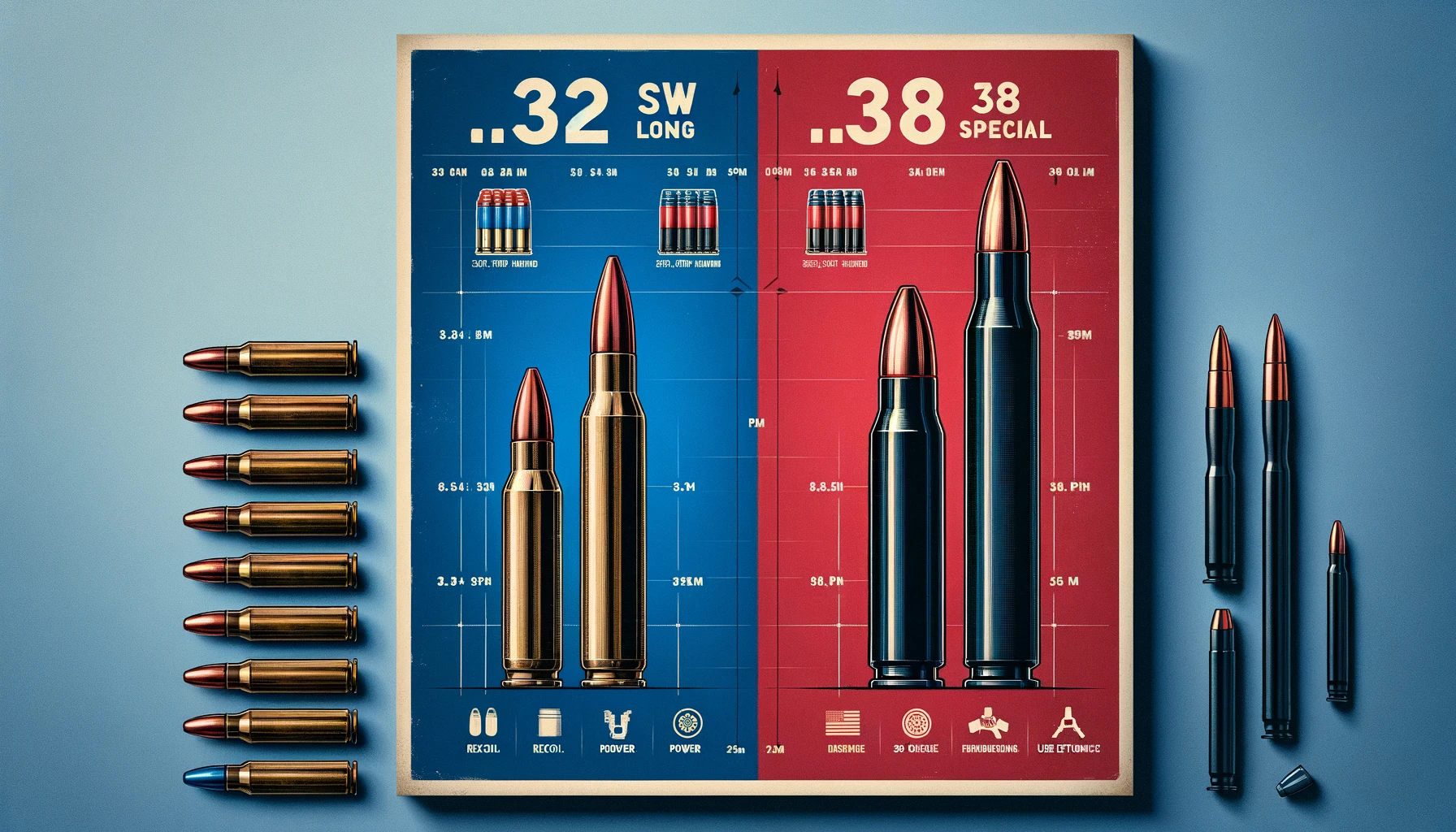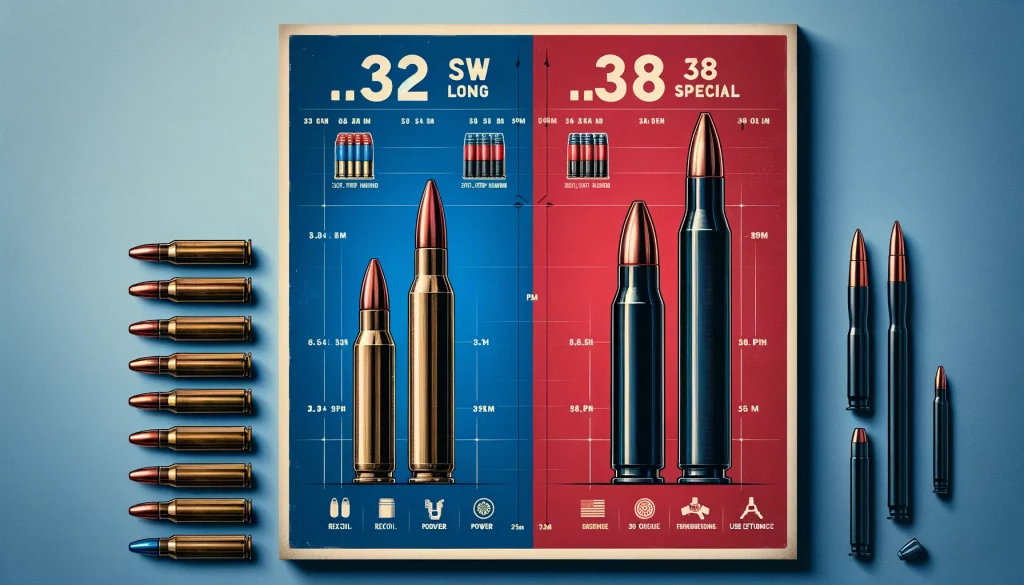
Choosing the right cartridge is pivotal in shooting sports and self-defense scenarios, where the balance between power, accuracy, and recoil can significantly impact performance and outcomes.
The 32 S&W Long and 38 Special are two such cartridges that have stood the test of time, each offering unique benefits to the shooter. Understanding the differences between these cartridges is crucial for anyone looking to make an informed decision, whether for self-defense, target practice, or recreational shooting.
This comparison dives into the nuances of each cartridge, shedding light on their specifications, performance, and suitability for various applications, guiding shooters towards the choice that best aligns with their needs and preferences.
Understanding “32 S&W Long vs 38 Special”
Understanding the differences and similarities between the 32 S&W Long and 38 Special is essential for making an informed decision tailored to specific shooting needs.
The choice between these cartridges involves balancing factors like stopping power, recoil, ammunition availability, and personal shooting preferences.
Each cartridge has its place, with the 32 S&W Long offering an excellent option for precise, low-recoil shooting and the 38 Special providing versatility and power for a wide range of applications.
Historical Context
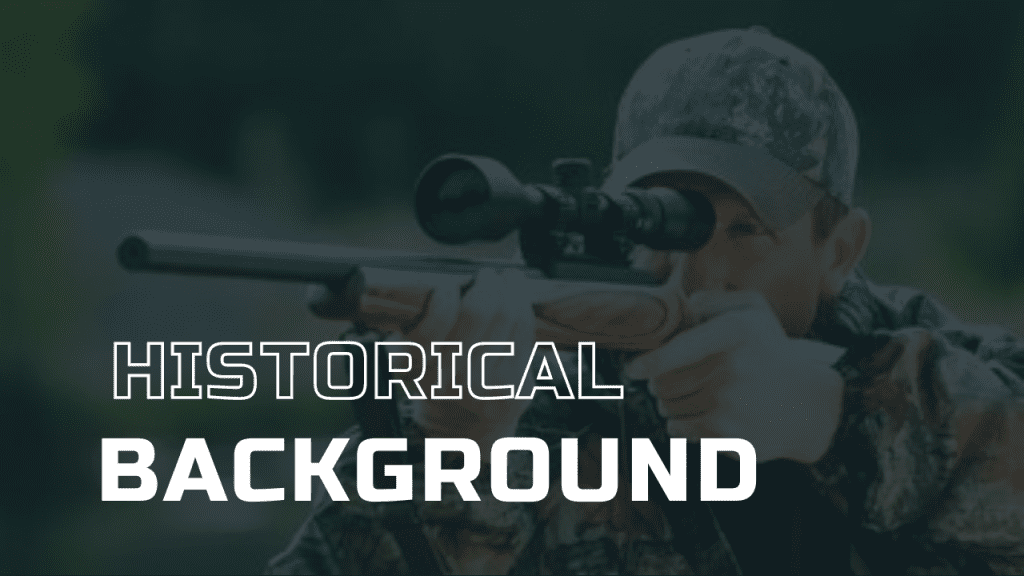
32 S&W Long: Introduced in 1896, the 32 S&W Long was developed as a lengthened version of the earlier .32 S&W. Designed for use in revolvers, it quickly gained popularity for its manageable recoil and respectable accuracy, making it a favorite among target shooters and a practical option for self-defense.
38 Special: The 38 Special, introduced in 1898, evolved from the earlier .38 Long Colt, seeking to improve on its predecessor’s lackluster performance in military engagements.
It became a staple cartridge for law enforcement agencies across the United States, appreciated for its reliability, effective stopping power, and versatility in a range of shooting scenarios.
Over the years, both cartridges have seen various phases of adoption and adaptation, from their roles in law enforcement to their popularity in competitive shooting and personal defense.
The evolution of the 32 S&W Long and 38 Special reflects changing demands in ballistic performance, shooter preferences, and technological advancements in firearms manufacturing.
Cartridge Specifications
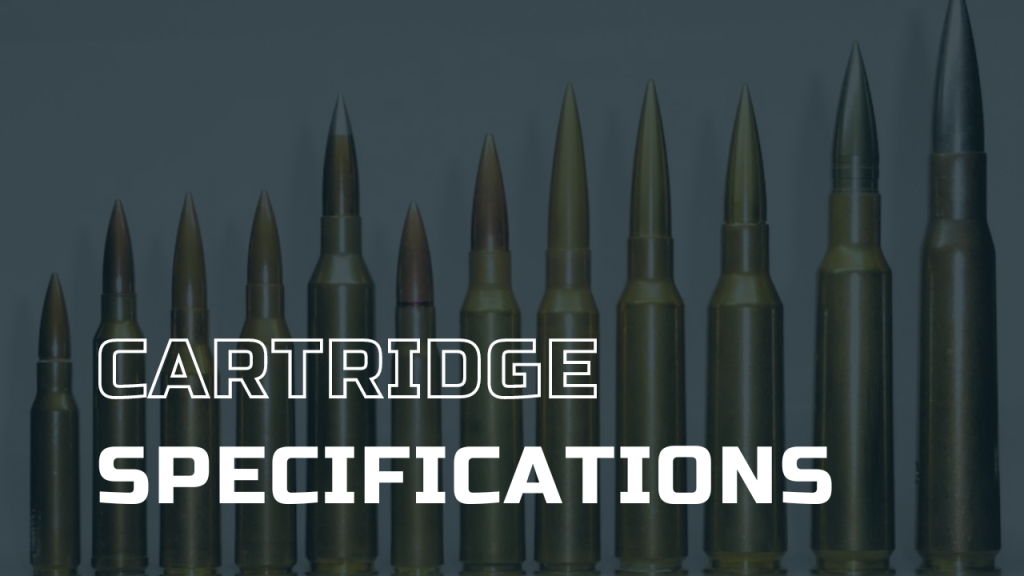
The 32 S&W Long and 38 Special differ significantly in their physical and ballistic characteristics, which influences their performance and application:
Case Length and Overall Length: The 32 S&W Long typically features a case length of around 0.920 inches and an overall length of approximately 1.280 inches. In contrast, the 38 Special boasts a longer case length of about 1.155 inches with an overall length of roughly 1.550 inches. These dimensions contribute to the 38 Special’s higher powder capacity and potential for greater velocity and energy.
Bullet Diameter: Both cartridges utilize a bullet diameter of .312 inches for the 32 S&W Long and .357 inches for the 38 Special, contributing to their distinct ballistic profiles and terminal performance.
Standard Bullet Weights and Velocities: The 32 S&W Long commonly employs bullet weights ranging from 85 to 115 grains, achieving velocities between 700 to 900 feet per second (fps). The 38 Special offers a broader range of bullet weights, from 110 to 158 grains, with velocities varying from 800 to 1,000 fps.
Ballistic Performance
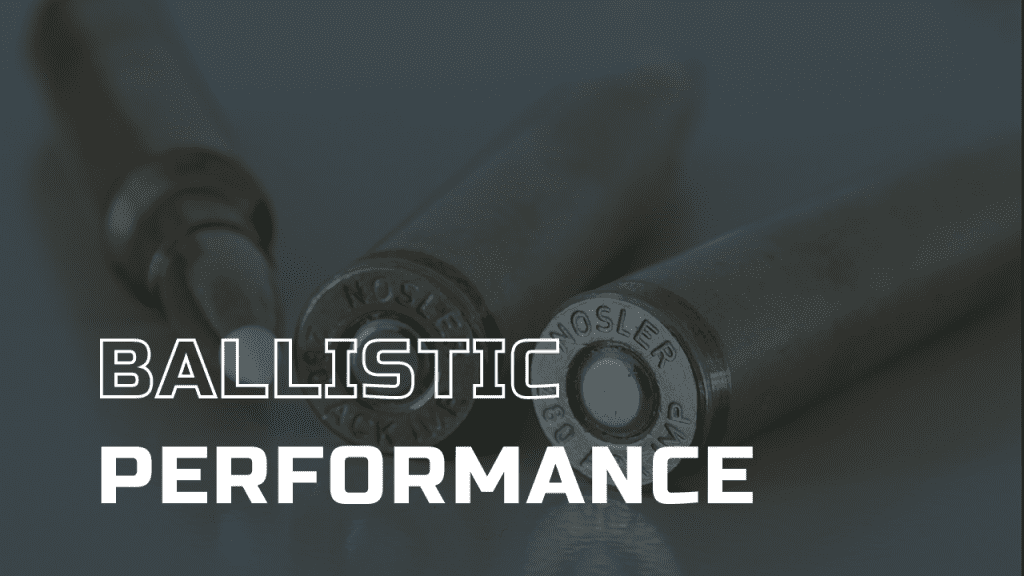
The 32 S&W Long and 38 Special differ notably in their ballistic performance, which significantly influences their application in shooting and self-defense. The 32 S&W Long, with its lighter bullets and shorter case, generally produces lower velocity and energy compared to the 38 Special.
Typical loads for the 32 S&W Long achieve velocities around 700 to 900 fps, with energy levels in the range of 100 to 200 foot-pounds. This results in a flatter trajectory over short distances but limited stopping power and effective range.
In contrast, the 38 Special offers a wider variety of loads, including +P ammunition, which can significantly increase velocity and energy. Standard loads can reach velocities of 800 to 1,000 fps, with energy levels ranging from 200 to 400 foot-pounds, enhancing stopping power and effective range.
The superior ballistic performance of the 38 Special makes it a more versatile cartridge, suitable for a broader range of self-defense and target shooting scenarios.
Recoil and Handling
Recoil is a critical factor that affects shooter comfort and accuracy. The 32 S&W Long is known for its mild recoil, making it an excellent choice for novice shooters or those who are recoil-sensitive.
The manageable recoil facilitates faster follow-up shots and can improve overall shooting accuracy, especially in target shooting contexts.
The 38 Special produces more recoil, particularly in its +P configurations, which can be more challenging for inexperienced shooters to handle.
Firearm Compatibility
A variety of revolver models are chambered for both the 32 S&W Long and 38 Special, offering shooters a range of options.
For the 32 S&W Long, common revolvers include classic designs from Smith & Wesson and Colt, many of which are prized by collectors and target shooters for their craftsmanship and accuracy.
The 38 Special is even more widely supported, with numerous models available from manufacturers such as Ruger, Smith & Wesson, and Taurus, including compact snub-nose revolvers for concealed carry and larger models for target shooting and home defense.
When choosing a firearm, considerations include the size and weight of the revolver, which can influence concealability and recoil management, and the cylinder capacity, which may impact firepower in self-defense situations.
Applications In Self-defense And Target Shooting
For self-defense, the 38 Special is often preferred due to its higher stopping power and effectiveness at neutralizing threats. The availability of +P ammunition further enhances its capability in defensive scenarios.
The 32 S&W Long, while less potent, can still be effective in self-defense, especially for those who prioritize ease of use and minimal recoil.
In target shooting and recreational use, both cartridges have their merits. The 32 S&W Long’s precision and low recoil make it a favourite for target practice and competitive shooting, particularly in revolver disciplines.
The 38 Special’s versatility and superior ballistic performance allow it to excel in both precision shooting and more dynamic shooting sports.
Availability And Cost
The availability of ammunition and firearms for both cartridges varies, with the 38 Special generally being more readily available due to its widespread use. Ammunition for the 32 S&W Long can be harder to find and may be more expensive due to lower demand and production volumes.
The cost of shooting each cartridge can also differ, with 38 Special ammunition typically being more affordable and available in a broader variety of loadings. Shooters of the 32 S&W Long may need to invest more in ammunition, possibly necessitating reloading to manage costs, especially for frequent practice sessions.
User Experiences And Recommendations

Compilation of Feedback
Shooters who have used both the 32 S&W Long and 38 Special cartridges often highlight the 32 S&W Long’s low recoil and precision as major advantages, especially for target shooting and training scenarios
On the other hand, the 38 Special is frequently praised for its versatility and stopping power, making it a preferred choice for self-defense and general-purpose shooting. Some criticisms of the 32 S&W Long include limited stopping power and less availability of ammunition, whereas the 38 Special’s higher recoil can be a drawback for new or recoil-sensitive shooters.
Recommendations
For shooters prioritizing self-defense, the 38 Special is generally recommended due to its superior stopping power and wide availability of defensive ammunition.
Those interested in historical firearms or target shooting might gravitate towards the 32 S&W Long for its historical significance and enjoyable shooting experience. New shooters or those sensitive to recoil may also find the 32 S&W Long to be an excellent starting point due to its manageable recoil and accuracy.
Features Comparison Table: “32 S&W Long vs 38 Special”
| Feature | 32 S&W Long | 38 Special |
| Ballistic Performance | Lower velocity and energy | Higher velocity and greater energy |
| Recoil | Lower | Moderate to higher |
| Stopping Power | Suitable for target shooting, limited in self-defense | Excellent for self-defense |
| Ammunition Cost | Potentially higher due to less availability | Generally lower, more widely available |
| Suitability for New Shooters | Highly suitable due to lower recoil | Suitable, with consideration for recoil management |
Similarities of “32 S&W Long vs 38 Special”
Both cartridges are renowned for their reliability and have been staples in the firearms community for over a century.
They can be used in revolvers for target shooting, self-defense, and plinking, offering shooters a range of options to suit their preferences. Additionally, both cartridges have historical significance and are appreciated by enthusiasts of classic firearms.
FAQs
How do the 32 S&W Long and 38 Special compare in terms of stopping power for self-defense?
The 38 Special generally offers greater stopping power, making it more suited for self-defense situations.
Can the 32 S&W Long be considered a viable option for new shooters due to its reduced recoil?
Yes, its lower recoil makes it an excellent choice for new shooters, providing a more comfortable learning experience.
What are the implications of choosing a 38 Special over a 32 S&W Long for someone interested in both self-defense and target shooting?
Choosing the 38 Special allows for a versatile cartridge that performs well in self-defense situations while still being capable in target shooting scenarios.
Are there any notable differences in ammunition cost and availability that could influence the choice between these two cartridges?
The 38 Special is generally more available and may offer a wider range of ammunition at different price points compared to the 32 S&W Long.
Conclusion
The 32 S&W Long and 38 Special cartridges each offer unique benefits that cater to different shooting preferences and requirements. The 32 S&W Long shines in scenarios where accuracy and minimal recoil are paramount, while the 38 Special offers greater versatility and stopping power for a broader range of applications.
Choosing between them depends on individual needs, such as the intended use, recoil sensitivity, and the specific characteristics valued in a cartridge. Ultimately, both cartridges uphold their legacies in the shooting world, continuing to serve their respective niches effectively.

